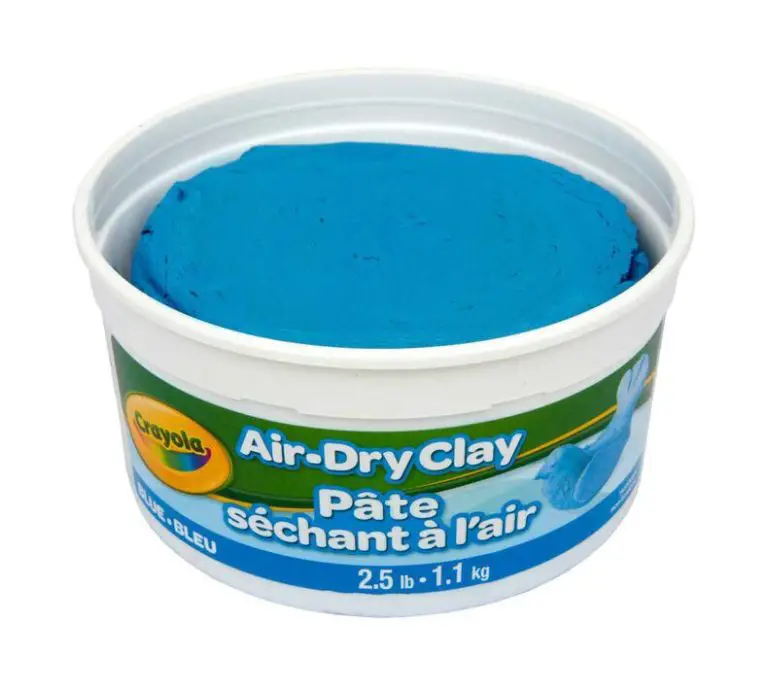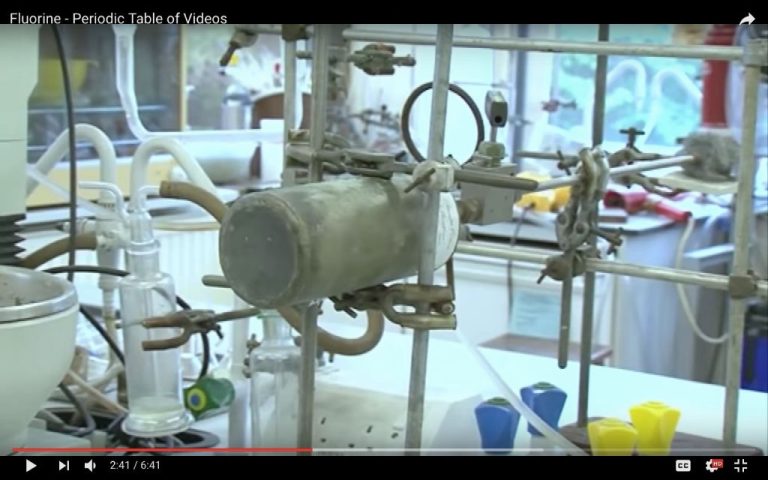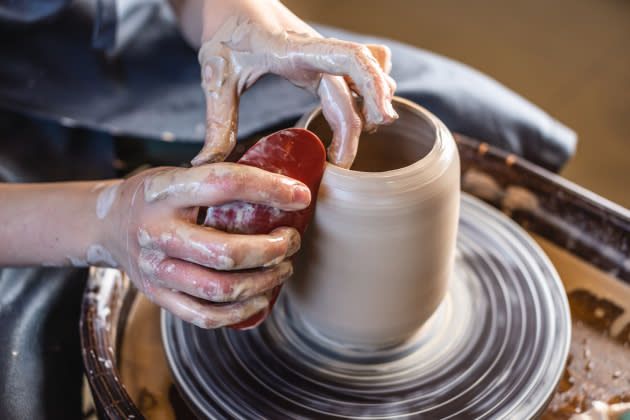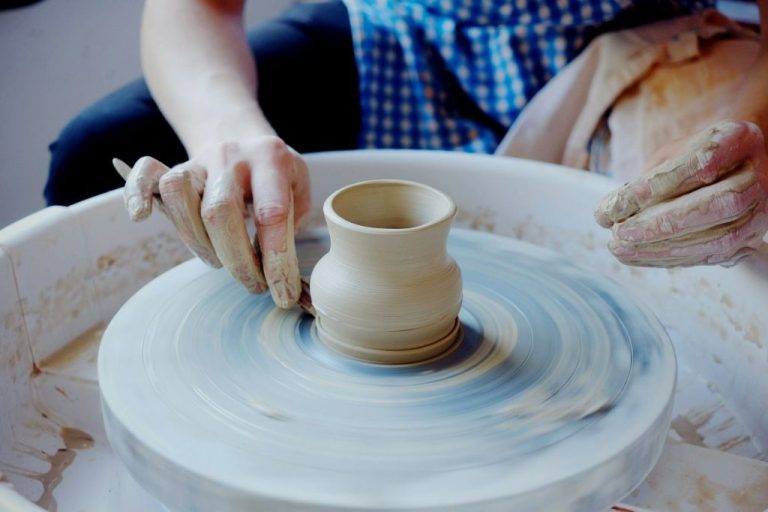What Is Ochre Yellow Color?
What is Ochre Yellow?
Ochre yellow is a naturally occurring yellow-brown pigment made from clay, sand, and mineral oxides. The name “ochre” comes from the ancient Greek word “okhros” meaning pale yellow. Ochre yellow has been used as a pigment for centuries and is known for its warm, earthy hue.
Specifically, ochre yellow is composed of iron oxide hydroxide minerals mixed with varying amounts of clay and sand. The clay provides ochre’s characteristic soft texture and earthy quality. The shade of ochre yellow can range from light yellow to deep golden brown depending on the mineral composition.
True ochre yellow has been used as a pigment since prehistoric times, with evidence of ochre painting dating back over 300,000 years. Ancient cultures across the world valued ochre for its vibrancy and connection to the earth. Today, ochre is still prized by artists for its natural, organic qualities.
Ochre Yellow Pigments
Ochre pigments are natural clay earth pigments that contain iron oxide. They have an earthy yellow to brownish red color depending on the composition. The main pigments are yellow ochre and gold ochre.
Yellow ochre contains a clay called limonite which has a yellowish color. It gets its pigmentation from hydrated iron oxide (Fe2O3.H2O). Gold ochre contains a clay called goethite which has a brownish-red color. It gets its pigmentation from anhydrous iron oxide (Fe2O3).
Natural ochre pigments are created by mining ochre deposits in places like France and Cyprus. The clays are then washed, filtered, and ground into a fine powder to produce the pigment. Synthetic iron oxide pigments can also be produced to create modern ochre colors.
Ochre pigments designated PY-43 are made with natural sources, while synthetic versions are designated PY-42.[1]
[1] https://en.wikipedia.org/wiki/Ochre
Use in Art
Ochre yellow has a long history of use in art and painting. Evidence shows it was used in prehistoric cave paintings, with the earliest known examples dating back over 40,000 years at sites like Lascaux in France and Altamira in Spain https://www.naturalpigments.com/artist-materials/yellow-ochre-a-comprehensive-guide. Ochre yellow pigments continued to be prevalent in ancient rock art across Europe, Africa, Australia, and the Americas.
During the medieval era in Europe, ochre yellow was an important pigment for illuminated manuscripts. It provided a rich golden yellow hue for embellishing religious texts and Bibles. Ochre paint helped illuminate gold leaf and give dimension to religious imagery and borders http://www.essentialvermeer.com/palette/palette_ocher.html.
The use of ochre yellow pigment reached its peak during the Renaissance. Great masters like Michelangelo, Raphael, and Rembrandt all used yellow ochre in their paintings. Its warm golden tones helped add visual interest and variety to flesh tones, draperies, landscapes, and still life paintings.
Symbolism and Meaning
Yellow ochre has long been associated with sunlight, joy and happiness. In ancient Egypt, yellow ochre was used to represent gold and associated with eternal life and wisdom. According to the blog Fabrics Store, “The colour yellow was therefore an extension of the sun’s radiant light and a powerful symbol of divine everlasting wisdom.”
In Chinese culture, yellow symbolizes power and wisdom. Chinese emperors wore yellow robes, and the color is prominent in imperial architecture. Per Colourlex, “In China it [yellow] is the color of happiness, glory and wisdom.”
In color psychology, yellow ochre evokes optimism, clarity, and warmth. It energizes and lifts the spirit. While bright yellow can be overstimulating, ochre yellow has a mellow earthiness that creates a feeling of tranquility and spiritual grounding.
Overall, the rich hue of yellow ochre has an uplifting radiance, imbued with symbolic meanings of joy, wisdom, and inner light.
Use in Design and Fashion
Ochre yellow has long been a popular color in interior design schemes and fashion. The earthy, natural shade is versatile and complements many other colors well. Some key uses in design include:
In interior design, ochre yellow is used to create warm, welcoming spaces. It works well alongside other natural tones like blue, brown, and slate gray. Ochre pairs nicely with wood finishes and can lighten up dark rooms. Interior designers often incorporate the tone into walls, furniture upholstery, rugs, and accessories.
For textiles and fashion, ochre dye has been used since ancient times to color clothing and fabrics. As a soft neutral, ochre offers a rich, mellow accent shade that complements many skin tones. It provides a sunny, golden accent in accessories and apparel. Ochre works well when paired with navy, denim blue, taupe, brown, or olive green.
Overall, ochre yellow brings energy and vitality to both interior spaces and fashion. Its natural, earthy quality helps unify and harmonize color palettes for an organic, cohesive look.
Geographic Locations
Ochre yellow pigment is made from ochre, which is an iron oxide-rich clay found in many locations around the world. Some of the most significant geographic sources of ochre include:
France – The Roussillon region of southern France was a major source of ochre pigment in Europe. Ochre deposits in this area have been mined since prehistoric times.[1]
Australia – Indigenous cultures such as the Aboriginals used ochre found across Australia for centuries. Ochre was used in rock paintings, body decoration, and ceremonial purposes.[1]
Ochre deposits are found on every continent except Antarctica. Other notable locations include England, Cyprus, Africa, the Americas, and India.[1] The widespread geographic availability of ochre made it one of the earliest and most commonly used pigments by diverse cultures across the globe.
Ochre Yellow in Nature
Ochre yellow is commonly found in nature, particularly in certain flowers, minerals, and animals. The vibrant coloration comes from pigments like carotenoids and limonene.
Several species of birds exhibit ochre yellow feathers, including canaries, goldfinches, and some parrots. Some butterflies and moths also have ochre-colored wings, such as the brimstone butterfly. Among insects, ochre yellow can be seen on some bees and wasps.
In marine life, ochre yellow is found on some tropical fish like yellow tang. Certain frogs and lizards may also have ochre markings. The bright coloration serves as camouflage or to attract mates in many of these animals.
In plants, ochre yellow is present in flowers like calendulas, chrysanthemums, forsythias, daylilies, and some lilies. It occurs in the petals, pollen, or stems. The pigments serve to attract pollinating insects.
Ochre yellow minerals like limonite, an iron ore, are found in mineral deposits around the world. Native Americans used ground ochre rocks to create pigments for cave paintings.
Comparable Colors
Ochre yellow has a similar golden, mustard-like hue to other warm yellow tones. It is darker and richer than light, bright shades like lemon yellow (https://www.suitableshop.com/blog/what-colortype-are-you/). The earthy pigment bears resemblance to metallic gold and amber colors.
Artists mix ochre yellow with warmer tones like orange or red to deepen the shade. Adding white makes it lighter and more pastel. When blended with cool blues and greens, ochre creates olive and mossy tones (https://www.wetcanvas.com/forums/topic/uses-for-cobalt-teal-pg50/). Its versatility and golden hue make it a standout color.
Uses and Applications
Ochre yellow has been used as a pigment for many purposes over the centuries. Some of the main uses and applications include:
Paint Pigment
Ochre yellow is one of the oldest known pigments and has been used since prehistoric times for painting. It creates a rich, earthy yellow hue. Many famous oil paintings feature ochre yellow, especially landscape paintings where it was used to depict sunlight. Ochre is also commonly used in acrylic and watercolor paints as an affordable and accessible yellow pigment. Painters mix it with other colors to create a wide range of warm hues.
Coloring Agent
Beyond artistic paints, ochre yellow is used as a coloring agent in many materials such as concrete, stucco, plaster, and asphalt. It provides a warm yellow tint. Ochre pigment is also mixed into clay and used to color pottery andceramics. In these applications, ochre improves the workability of the material and impacts its final color.
Cosmetics
Ochre pigment is used in some cosmetics, particularly yellow-toned powders, bronzers and eyeshadows. Its natural earthy hue provides a subtle warming effect. Historically, ochre was used as body paint and in early ceremonial cosmetics.
Interesting Facts
One of the earliest pigments used by humans is ochre yellow. According to research, prehistoric humans used ochre pigments as far back as 300,000 years ago. Ochre pigments have been found at archeological sites dating to the Middle Paleolithic and Upper Paleolithic eras. The presence of ochre at these sites indicates it held significance for early humans and was a commonly used material. Ochre pigments were used for decorative and symbolic purposes such as creating cave paintings, marking bodies and objects, and in burials. The Blombos Cave in South Africa contains ochre pigments dated to around 75,000 years ago that were used to create geometric designs. The long history of ochre use suggests it played a role in human cognitive and cultural development.
Some natural ochre pigments contain toxic metals like arsenic, lead, and mercury. Ingesting or inhaling ochre dust from these pigments can cause health issues. Modern synthetic yellow ochre pigments are made without these toxic metals. Artists should take precautions and avoid directly inhaling dry pigment dust when working with natural ochre.
The early and widespread use of ochre pigments has led some researchers to hypothesize it played a role in human evolution. Some theories suggest using ochre showed early planning abilities and abstract thinking associated with modern human cognition. The use of ochre for body painting may have expressed symbolic thinking and complex communication important for social bonding and exchanges. Ochre materials at burial sites imply symbolic ideas about death developed early on. While difficult to prove, the long history of ochre use points to its potential evolutionary importance for early humans.





